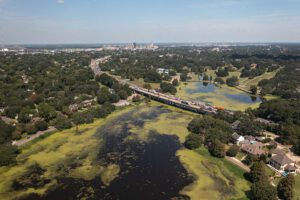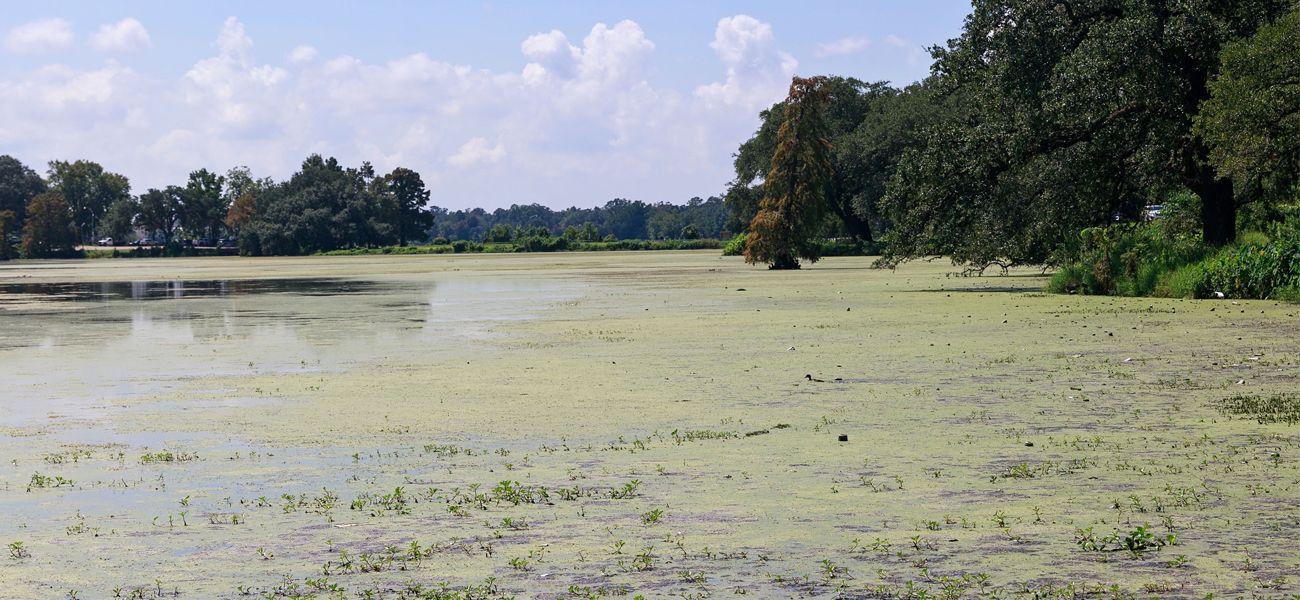Keep an eye out for these University Lakes Project improvements
It might be Baton Rouge’s most popular recreational feature, but lately, the look—and smell—of the University Lakes suggests its long-awaited improvements are coming not a minute too soon.
By late summer, algae blooms had spread over most of the surface of City Park Lake, the six-lake system’s second largest body of water. In University Lake, invasive water hyacinths had choked the Dalrymple Drive shoreline, extending for several yards into the lake itself.
The overabundance of vegetation around the two main lakes was worse than ever. And in the baking summer sun, big sections of plant life were rotting, releasing foul odors even as runners and walkers continued to use the area for exercise.
Since the lakes system was converted from a cypress swamp to a series of lakes in the 1930s, its shallow depths have invited too much vegetation to grow. The lakes have also been unable to properly filter nutrient runoff that drains into the water bodies from stormwater. It’s a problem that’s visibly worsened with each passing year.

At the same time, however, this summer also finally provided visual evidence that the lakes’ highly anticipated restoration project had kicked off.
In August, a four-week dredging test run, known as the Advanced Work Project, concluded in a small portion of University Lake near East Lakeshore Drive and Stanford Avenue.
Its purpose was to dredge one small area before major dredging begins in earnest, and to create a small island with the dredge materials to examine their usefulness in building up shorelines, future additional islands and pedestrian pathways.
The exploratory work is helping construction teams learn more about the lakes’ conditions before the project kicks off.
The next step, says University Lakes Project lead and CSRS Principal Mark Goodson, is to wait for final permitting from the Army Corps of Engineers, which is expected to come by the end of the year. Once that’s in place, the first phase of the actual work in restoring and improving the lakes can begin.
To keep reading about the upcoming phases of construction, check out the full story from the October 2022 issue of our sister magazine, 225.












